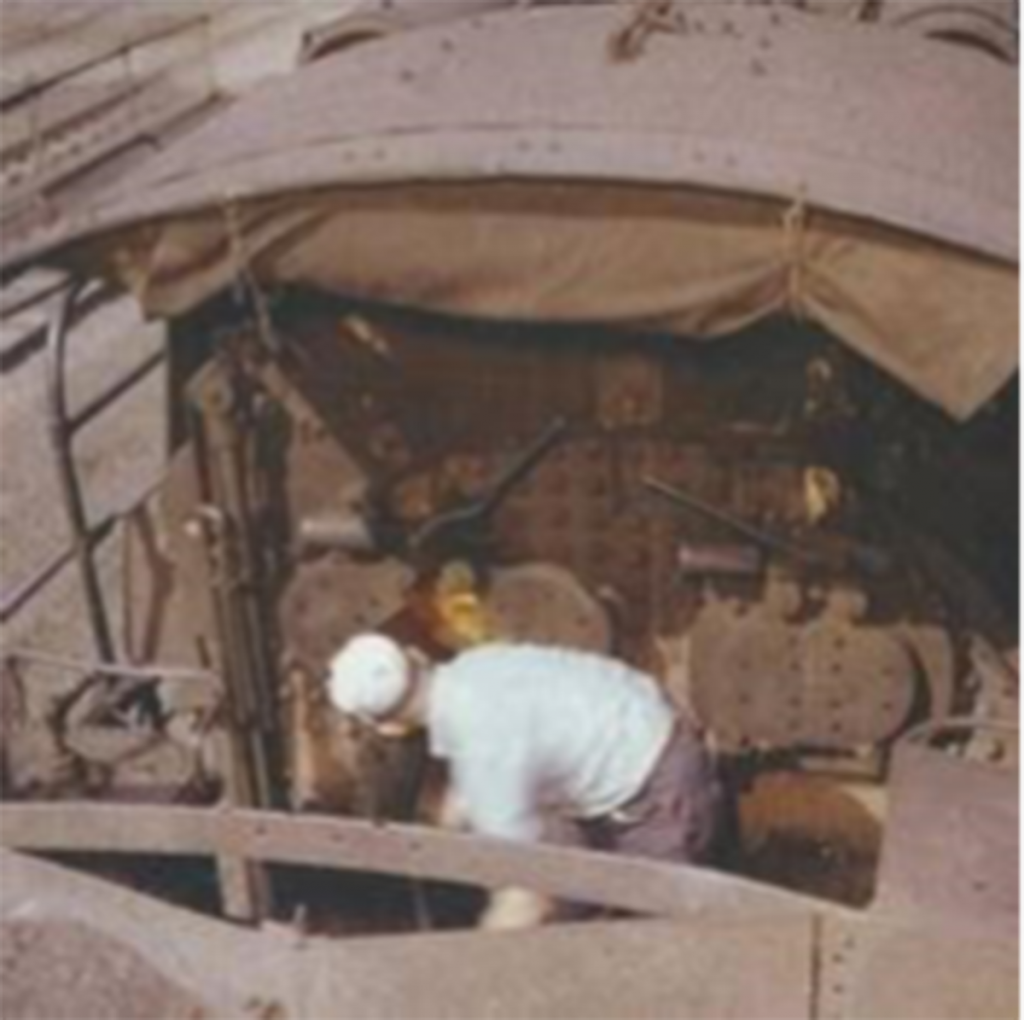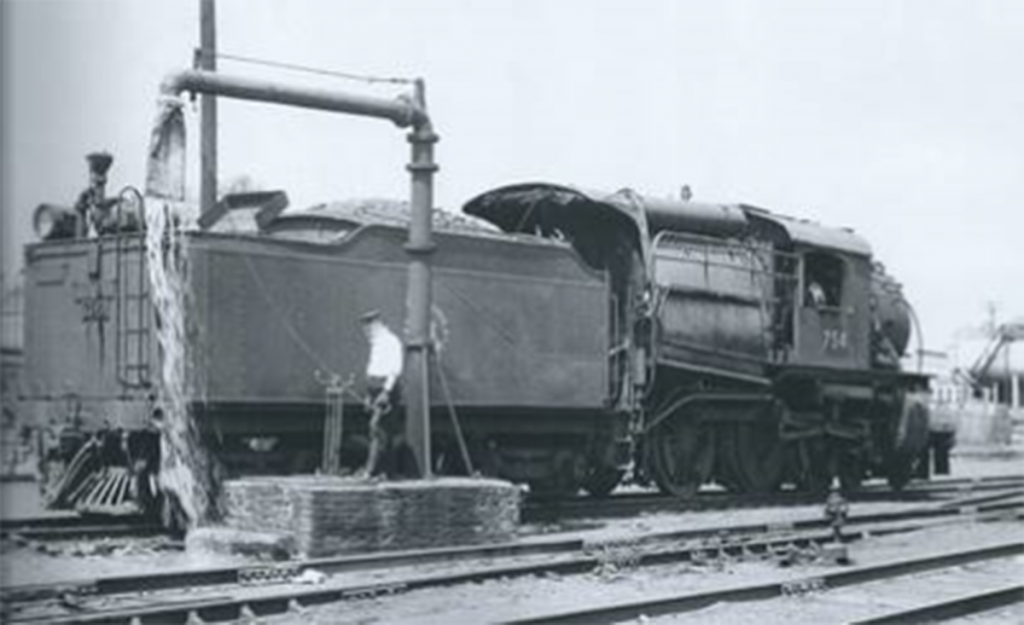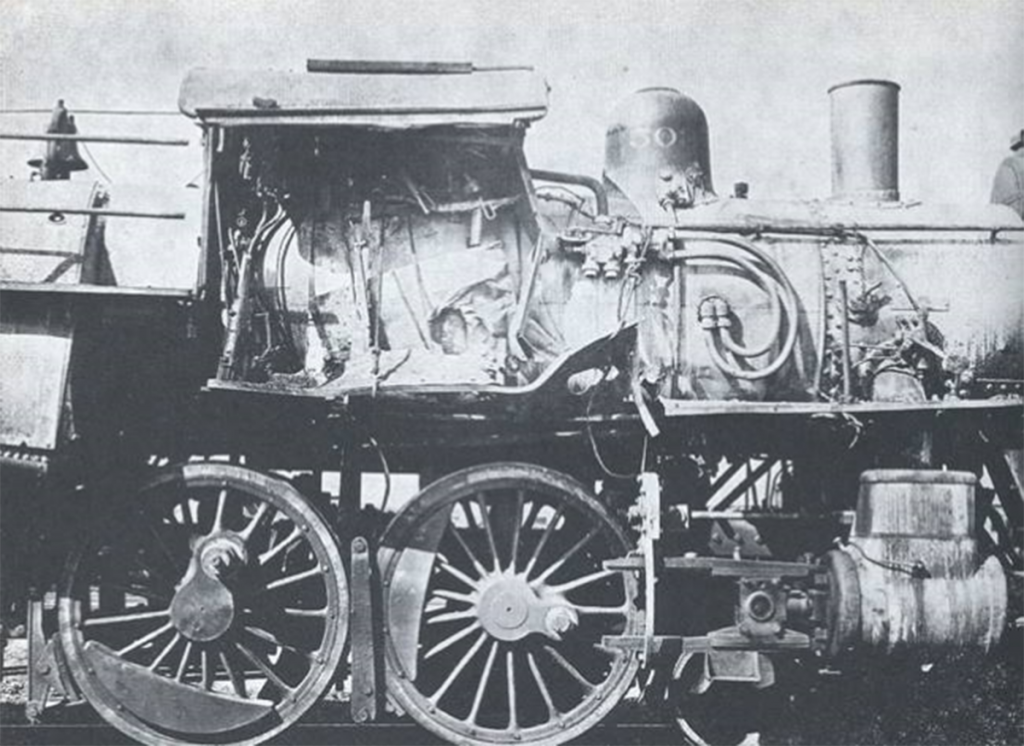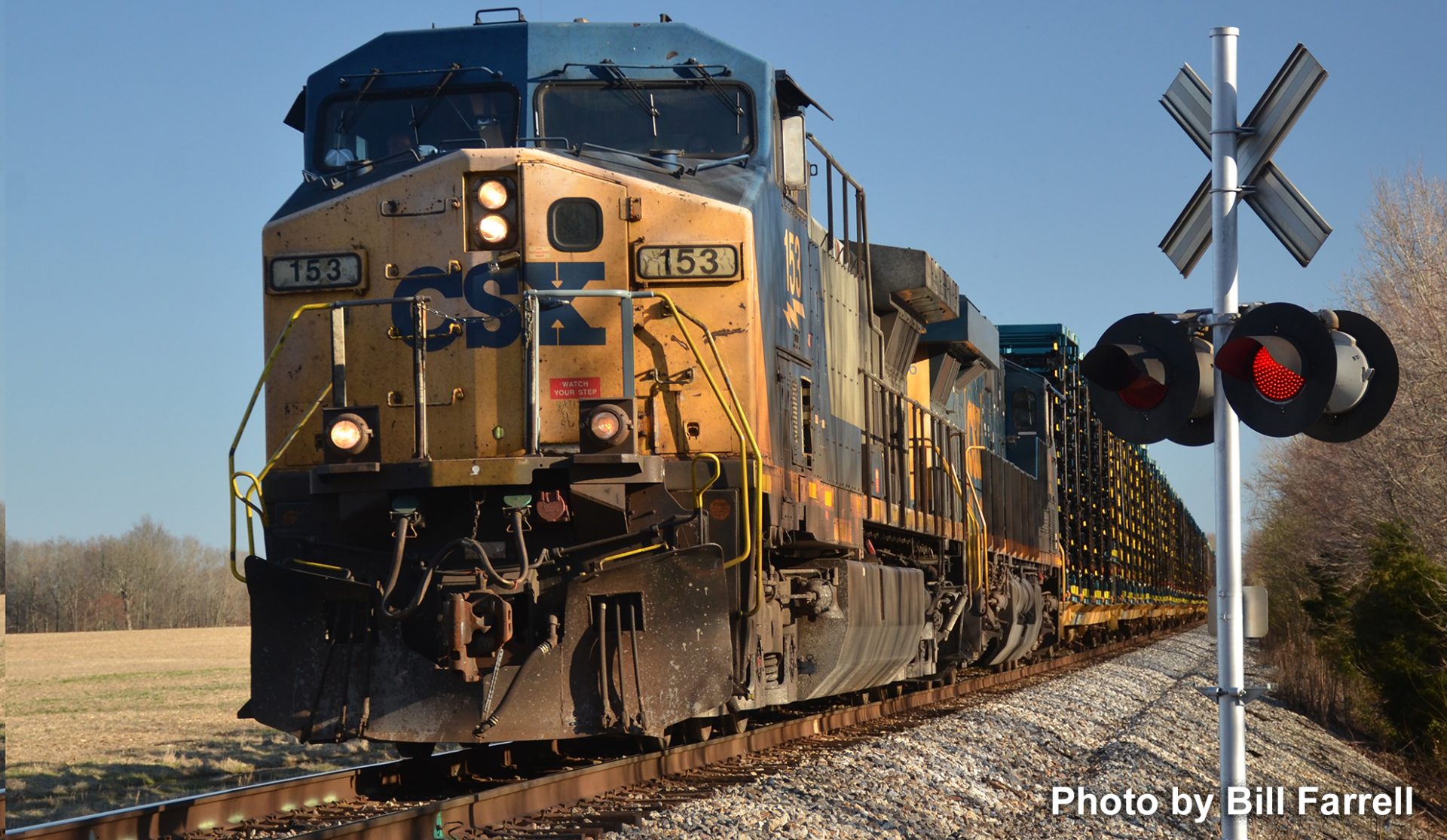
Camelback locomotives (also known as a Mother Hubbard or a center-cab locomotive) is a type of steam locomotive with the driving cab placed in the middle, astride the boiler. Camelbacks were fitted with wide fireboxes which would have severely restricted the engineer’s visibility from the normal location at the rear.

You can see in the picture (above) the size of the firebox, extra wide in order to burn cheap and readily available anthracite coal. Placement of the cab above the driving wheels also provided added traction. Camelbacks were widely used on the Central Railroad of New Jersey and the Reading Railroad. The fireman worked from a large platform on the tender, and in some cases had a chute to allow him to deliver coal to the front of the grate.

The Camelback’s cab astride the boiler design raised concerns for its crew. The engineer was perched above the side-rods of the locomotive, vulnerable to swinging and flying metal if anything rotating below should break. In addition, the fireman was exposed to the elements at the rear. The Interstate Commerce Commission banned Camelbacks but gave exceptions to allow those under construction to be completed.
A broken side rod swiped clean the engineer’s side of the cab on this Delaware & Hudson engine. This ever-present danger to the engineer explains the eventual outlawing of center-cab locomotives.
Credits: Two pics at top by the late Phil Hastings as seen in Kalmbach’s Steams Lost Empire. Damaged camelback photographer unknown, in Train Wrecks a Robert C. Reed book. -Gary O. Ostlund
